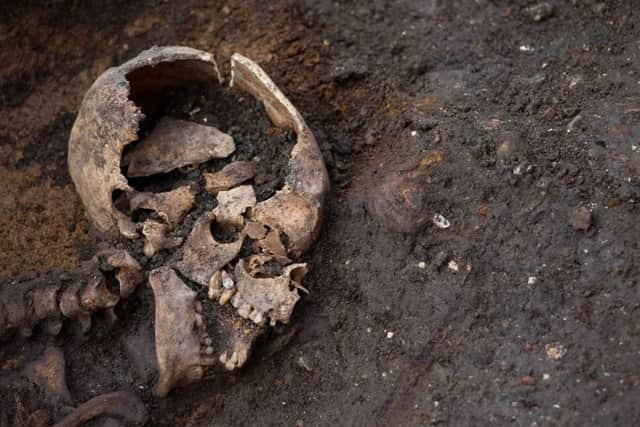Plague, cholera and bodysnatchers: Who could the Leeds Playhouse human remains belong to?
The Quarry Hill area has played a grisly role in the history of the epidemic diseases to have hit Leeds over the centuries.
Historic human remains found at Leeds Playhouse siteDuring the 1600s, when bubonic plague first struck Leeds, Quarry Hill was outside the city boundary, and was used as the location for 'plague cabins' - a form of crude isolation hospital where victims would be taken to die.
Advertisement
Hide AdAdvertisement
Hide AdHow the Leeds cholera epidemic led to medical progressAs the city grew, Quarry Hill became the site of Victorian slums that were considered to be among the most notorious in Europe for poverty and squalor. In 1832, Leeds was struck by an outbreak of cholera, which killed more than 700 people. The first cases were in a cul-de-sac off Marsh Lane - the road which runs close to the Playhouse site today. A special hospital was set up in St Peter's Square, which is next to the Playhouse, and 2,000 victims were admitted.


Discovery of Victoria Gate skeletons reveals grim insight into city's pastIn 2016 the bodies of 28 children were found beneath Victoria Gate during building work on the shopping centre - and some were thought to have died during the cholera epidemic and buried in what was then the graveyard of the Ebenezer Chapel.
One of the parish churches of Quarry Hill, St Mary's at Mabgate, was demolished in 1979 and the graveyard remains undisturbed, although it has been landscaped over. During Victorian times, it was said to have been targeted by bodysnatchers, who would steal fresh corpses to sell to medical men for use in dissections. Burials stopped in the mid-1800s, when a new cemetery opened at Burmantofts, but many victims of earlier cholera epidemics were interred there.
In the 1930s, the building of the new Quarry Hill flats was delayed when disused burial grounds were discovered beneath the site.